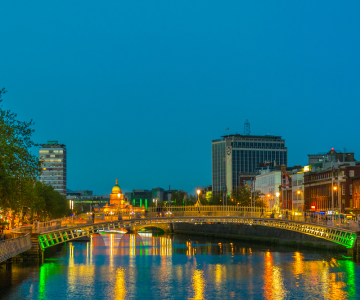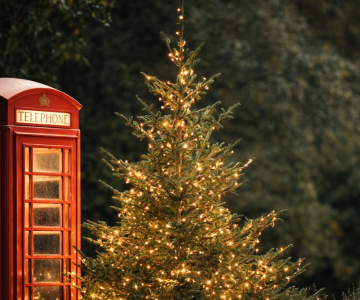
6 Ways to Celebrate Christmas in Dublin 2025
Want to experience the best of Christmas in Ireland?
Evie Lucas
Every October, Dublin comes undead with spooky celebrations – from the annual Bram Stoker Festival to eerie haunted houses like The Nightmare Realm. But long before Halloween’s sugar-filled nights and questionable costumes, there was Samhain, an ancient Celtic festival that marked the last harvest and ushered in the beginning of winter. 🍂
Samhain (careful – it’s pronounced sow-in) was celebrated on October 31st between the autumn equinox and winter solstice. As the nights began to stretch longer, the crops were harvested, and, according to Celtic belief, the veil between the living and the ‘other’ world grew thin. Ghosts, fairies, gods, and a whole host of supernatural figures were said to slip through unseen doors and wander among the living. While some brought fortune, many more brought chaos.
To stay safe from these malevolent visitors, people left food and drink outside their homes as offerings and wore animal hides or monstrous masks to hide from fairies prone to kidnapping – a little like fancy dress today, except with fewer abductions.
A handful of creatures in Irish folklore are closely tied with Samhain. The Púca, a shapeshifting spirit, was said to claim the last of the harvest – a tradition still honoured today at the Púca Festival near Dublin. Then there’s the Dullahan, a headless horseman who carries his own skull, and the Sluagh, a host of flying, restless souls. Some tales also speak of Lady Gwyn, a ghostly woman in white searching the night for lost spirits.
Samhain was also when the dead were thought to return to the living. Families would leave their doors ajar in case their ancestors came home and take part in ‘dumb suppers’ – a silent meal where spirits were invited to join.
After the Romans conquered Celtic lands, they brought along their own rituals. Feralia, a festival for the dead, and Pomona, a celebration of fruit and trees, both took place around the same time. Pomona’s symbol was the apple, which some believe inspired the custom of apple bobbing.
Later, the Christian Church introduced All Saints’ Day on November 1st and All Souls’ Day (also called All Hallows) on the 2nd, but Samhain superstitions persisted. Bonfires, costumes, and offerings to the dead continued – just under new names. Gradually, October 31st, or All Hallows Eve, blurred into Halloween, and the ancient festival of spirits evolved into the night we know today.
Many modern Halloween traditions are a blend of new and ancient customs. In early Samhain, people carved turnips to ward off evil spirits. When Irish and Scottish immigrants brought these traditions to America, they realised native pumpkins were easier to carve – and just like that, pumpkin carving was born.
You may also recognise the practice of ‘souling’: disguising yourself and performing songs door to door in exchange for food. It was part entertainment, part blessing, and eventually inspired today’s trick-or-treating.
Whether you’re a history buff or lover of all things spooky, Samhain is the perfect way to experience Irish culture and flex your English skills along the way. This month, why not:
- Host your own dumb supper
- Carve your own turnips – or see a ghost turnip from 1943 at the National Museum of Ireland
- Share in the mischief at the Púca Festival
- Learn more about Irish folklore at the Leprechaun Museum
- Join the Fingal Mummers for scary masks and storytelling
Craving an adventure? Fast-track your English language progress with our immersive English courses in London, Eastbourne, and Dublin.

Want to experience the best of Christmas in Ireland?

As supermarket shelves fill up with festive stockings and novelty Santa hats, London is transforming into a winter wonderland.

Embrace the festive season as an opportunity to learn English through movies with our top 10 Christmas films to watch this December!
We use technology on our website to personalize content, customize and measure advertising, and analyze website traffic. By clicking OK, you agree to the use of these technologies in their entirety.
Learn more in our Privacy Policy.